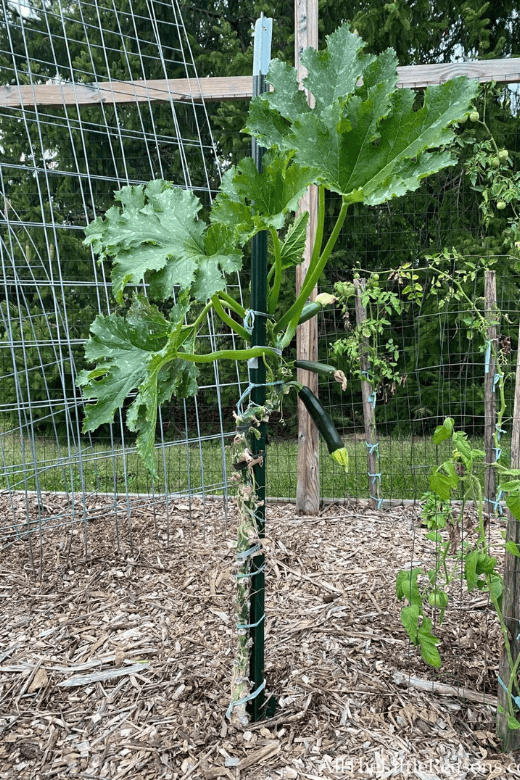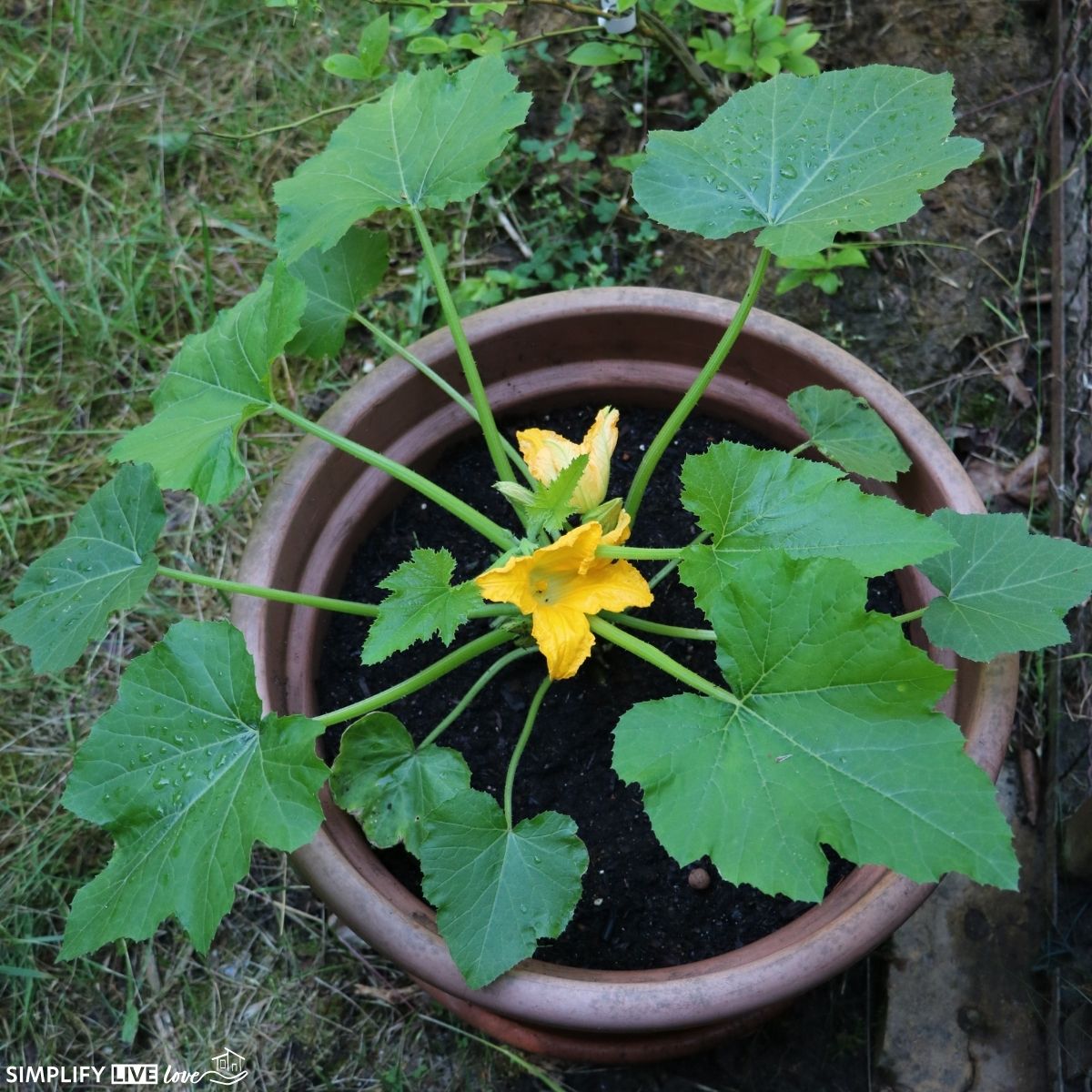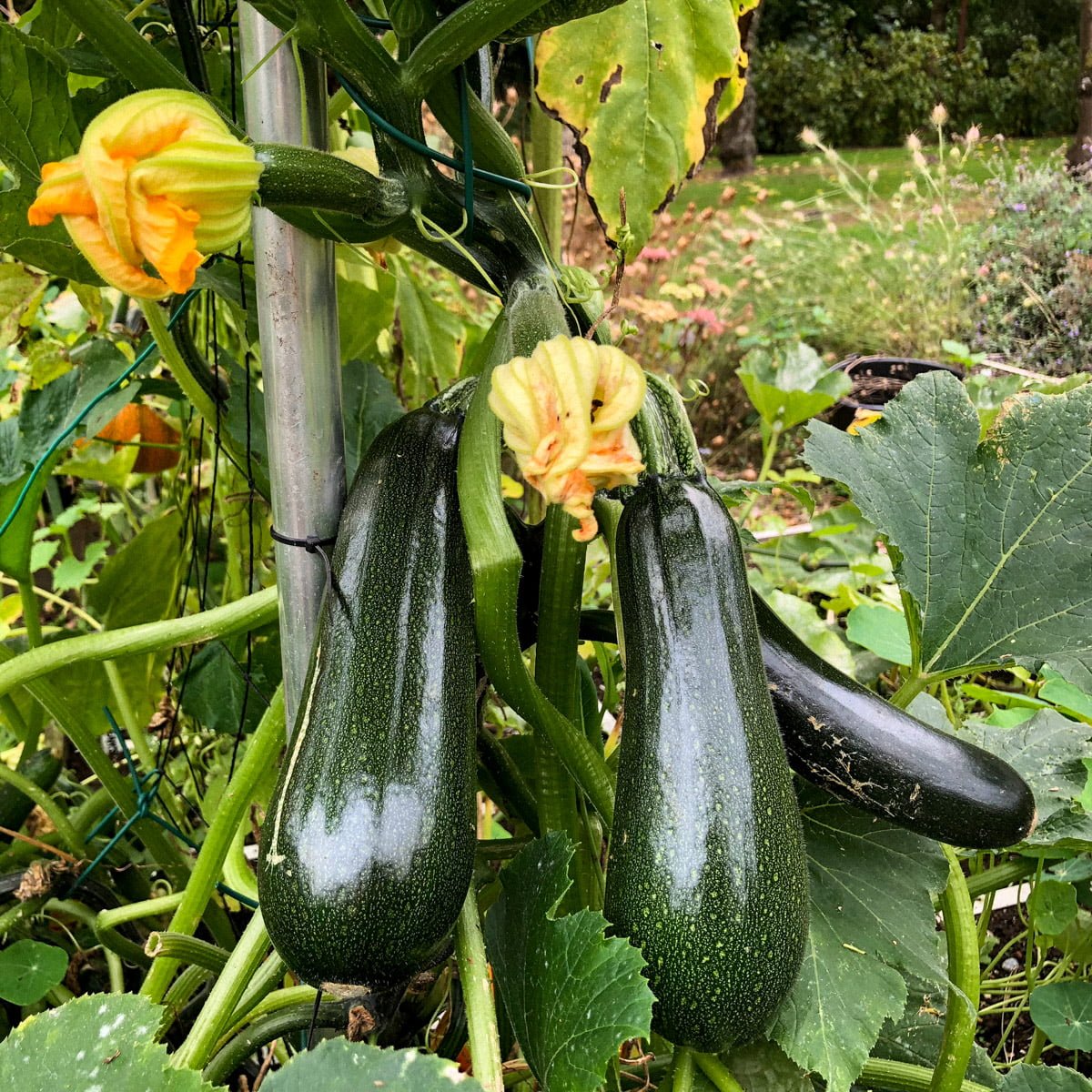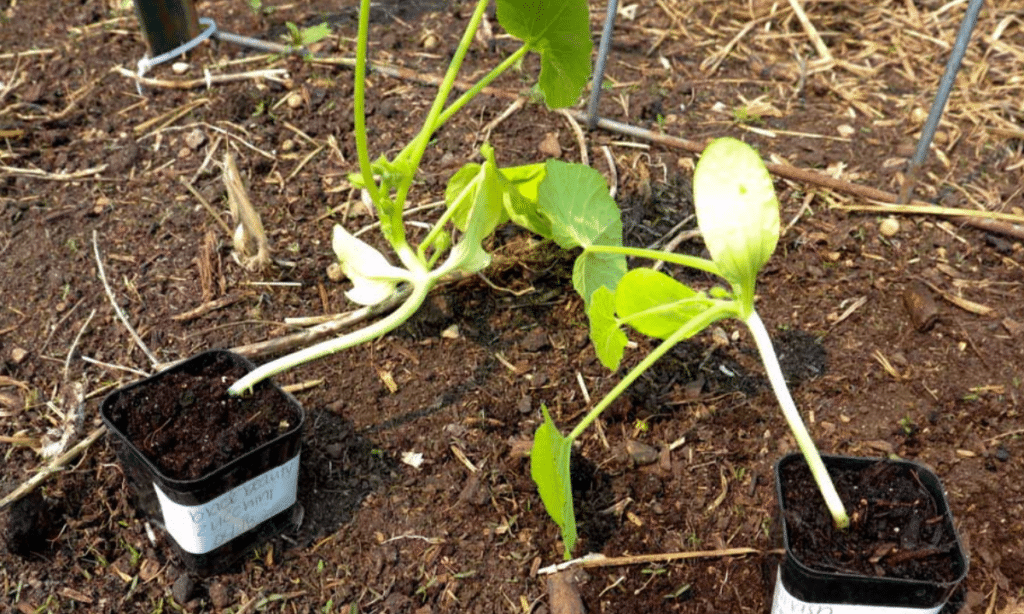Are you a beginner gardener looking to grow zucchini on a trellis? Look no further! This guide will walk you through the basics of growing zucchini on a trellis, from selecting the right trellis design to ensuring proper support for your plants. Get ready to bring your zucchini growing game to new heights!
Choosing the Right Trellis
Consider the Size of your Zucchini Plants
When choosing a trellis for your zucchini plants, it’s important to consider the size and potential growth of the plants. Zucchini plants can vary in size, with some varieties reaching up to 3-4 feet in height. It’s essential to choose a trellis that will provide adequate support and allow the plants to comfortably grow vertically. Look for trellises that are sturdy and can withstand the weight of the plants as they mature.
Types of Trellises to Choose From
There are various types of trellises available for growing zucchini, and the choice depends on your preference and available space. A popular option is a vertical trellis, which consists of a sturdy framework with crisscrossed wires or netting. This type of trellis allows the zucchini vines to climb and be supported as they grow upwards. Another option is a pyramid trellis, which provides a visually appealing structure for the zucchini plants to climb. Additionally, you can make use of a simple A-frame trellis or a cattle panel trellis.
Materials to Build a Trellis
When building or purchasing a trellis for your zucchini plants, consider the materials used. Common materials include wood, metal, PVC pipes, and wire mesh. Wood trellises are sturdy and durable, while metal trellises offer long-lasting support. PVC pipes are lightweight and easy to work with, making them a popular choice for DIY trellises. Wire mesh provides excellent support and allows the zucchini vines to weave through easily. Choose a material that suits your needs and budget.
Determining the Position of your Trellis
The positioning of your trellis is crucial for the successful growth of zucchini plants. Ensure that the trellis is placed in a location that receives ample sunlight, as zucchini plants require at least 6-8 hours of direct sunlight daily. Additionally, consider the space available and the dimensions of your trellis. Leave enough room for the zucchini plants to climb and spread out while ensuring they don’t shade other nearby plants. It’s also beneficial to position the trellis in a way that allows for easy access and maintenance.
Preparing the Soil
Testing the Soil pH
Before planting your zucchini on a trellis, it’s important to test the pH level of your soil. Zucchini plants prefer a slightly acidic to neutral pH range of 6.0 to 7.0. You can easily test the pH level of your soil using a pH testing kit available at garden centers. If the pH is outside the desired range, you can adjust it by adding appropriate soil amendments.
Amending the Soil
To ensure optimal growth and productivity, it’s essential to amend the soil before planting your zucchini. If your soil is heavy clay or sandy, adding organic matter such as compost, well-rotted manure, or leaf mold can improve its texture and fertility. These amendments help retain moisture and provide essential nutrients to the plants.
Adding Organic Matter
Incorporating organic matter into the soil is crucial for the overall health of your zucchini plants. Organic matter improves soil structure, enhances drainage, and increases nutrient availability. You can add compost, aged manure, or other organic materials to the soil before planting. Spread a layer of organic matter over the planting area and mix it thoroughly into the top few inches of soil.
Enhancing Drainage
Proper drainage is essential for zucchini plants to thrive. If your soil tends to hold water and become waterlogged, it’s important to improve its drainage before planting. You can amend the soil with materials such as perlite or vermiculite to enhance drainage. Alternatively, raised beds or mounds can be created to provide a well-drained planting environment for your zucchini plants.

Starting Zucchini Seeds
Selecting High-Quality Seeds
When starting zucchini from seeds, it’s important to select high-quality seeds from a reputable source. Look for seeds that are specifically labeled for the variety of zucchini you intend to grow. Check the seed packet for information on the plant’s characteristics, such as size, flavor, and disease resistance. Opt for seeds that are fresh and viable, as old or poorly stored seeds may result in low germination rates.
Germinating Seeds Indoors
Zucchini seeds can be started indoors 4-6 weeks before the last expected frost date in your area. To germinate the seeds, fill seedling trays or small pots with a quality seed-starting mix. Sow one or two seeds per container, about half an inch deep. Keep the soil consistently moist and maintain a temperature of around 70-85°F (21-29°C) for optimal germination. Once the seeds germinate and develop their first leaves, thin out the weaker seedlings, leaving only the healthiest one in each container.
Transplanting Seedlings
When the danger of frost has passed and the seedlings have developed two or three sets of true leaves, it’s time to transplant them into the garden. Choose a sunny location with well-prepared soil and sufficient space for the mature zucchini plants. Gently remove the seedlings from their containers, being careful not to damage the roots. Dig a hole in the garden bed and plant the seedling, ensuring that the soil level matches that of the container. Water the newly transplanted seedlings thoroughly to help them establish in their new environment.
Planting Zucchini on a Trellis
Choosing the Right Location
Selecting the right location for planting zucchini is crucial for their growth and productivity. Zucchini plants require full sun, so choose a spot that receives at least 6-8 hours of direct sunlight daily. Additionally, ensure that the trellis is positioned in a way that provides adequate support and allows the zucchini plants to climb easily. Consider the proximity to other plants, ensuring that the zucchini plants do not shade or overcrowd them.
Spacing the Zucchini Plants
Proper spacing is essential when planting zucchini on a trellis. Each plant should be given enough space to grow and spread comfortably without overcrowding. Typically, zucchini plants require a spacing of around 3-4 feet between each plant. This allows for optimal air circulation, reduces the risk of disease, and provides space for the plants to develop large, healthy fruits.
Setting up the Trellis
Before planting the zucchini, ensure that the trellis is properly set up and secured. This will prevent any disturbance or damage to the plants once they start climbing. Place the trellis firmly in the ground, ensuring it is sturdy and stable. If you are using a vertical trellis, make sure it is tall enough to accommodate the potential height of the zucchini plants. For pyramid or A-frame trellises, ensure the structure is well constructed and can withstand the weight of the plants.
Planting Techniques
When planting zucchini on a trellis, dig holes in the soil that are large enough to accommodate the root ball of each plant. Place the zucchini seedlings in the holes, making sure the soil level matches that of the container. Gently backfill the holes, pressing the soil around the roots to ensure good contact. Water the plants immediately after planting to help them settle in. It’s recommended to provide a layer of mulch around the plants to retain moisture and suppress weed growth.

Watering Zucchini Plants
Establishing Watering Routine
Water is essential for the growth and development of zucchini plants. Establishing a regular watering routine is crucial to ensure they receive consistent moisture. Water the plants deeply, providing enough moisture to penetrate the root zone. Avoid overhead watering methods that can lead to the spread of diseases. Instead, aim to water directly at the base of the plants to minimize foliage wetness.
Monitoring Soil Moisture
Regularly monitoring the moisture levels in the soil is important to prevent both under and overwatering. Stick your finger into the soil about an inch deep to check for moisture. If it feels dry, it’s time to water. On the other hand, if the soil feels consistently wet or saturated, reduce the frequency of watering to prevent waterlogging.
Providing Consistent Moisture Levels
Zucchini plants need consistent moisture levels to avoid stress and promote healthy growth. Aim to provide a consistent amount of water, avoiding extreme fluctuations. Mulching around the plants can help conserve moisture and reduce the frequency of watering. However, make sure not to overmulch, as excessive mulch can retain too much moisture and lead to root rot.
Avoiding Overwatering
While consistent moisture is important, overwatering can negatively impact zucchini plants. Excess water can lead to root rot, fungal diseases, and poor growth. Ensure the soil has adequate drainage to prevent waterlogging. If you notice signs of overwatering such as wilting, yellowing leaves, or a foul smell, reduce the frequency of watering and adjust accordingly.
Feeding Zucchini Plants
Choosing the Right Fertilizer
Providing adequate nutrients is essential for the healthy growth of zucchini plants. When it comes to choosing a fertilizer, opt for a balanced, organic fertilizer with equal amounts of nitrogen, phosphorus, and potassium (NPK). This ensures that the plants receive all the necessary macro and micronutrients for optimal growth and fruit production. Avoid using excessive amounts of nitrogen, as this can result in excessive foliage growth at the expense of fruit development.
Applying Organic Fertilizers
Organic fertilizers enrich the soil and improve its overall fertility. Compost, well-rotted manure, and worm castings are excellent choices for organic fertilizers. These organic materials slowly release nutrients into the soil, providing a steady supply for the zucchini plants throughout the growing season. Apply the organic fertilizers as directed on the packaging, ensuring they are spread evenly around the plants and gently mixed into the soil.
Using Compost Tea
Compost tea is a natural and nutrient-rich liquid fertilizer that can benefit zucchini plants. It is made by steeping compost or composted manure in water and allowing it to ferment for a designated period. The resulting liquid is then applied to the plants’ root zones, providing them with a concentrated source of beneficial microorganisms and nutrients. Compost tea can help improve soil fertility, enhance plant health, and boost overall productivity.
Feeding Schedule
To maintain the health and productivity of your zucchini plants, establish a feeding schedule. Apply fertilizers according to the specific instructions provided on the packaging. Generally, it’s recommended to provide a balanced fertilizer every 4-6 weeks throughout the growing season. However, monitor your plants regularly and adjust the feeding schedule if you notice signs of nutrient deficiency or excessive growth.

Training Zucchini Plants on the Trellis
Supporting the Main Stem
As zucchini plants grow, it’s essential to support the main stem to encourage upward growth. Gently tie the main stem to the trellis using soft plant ties or strips of cloth. This will prevent the stem from bending or breaking under the weight of the developing fruits. Regularly check the ties to ensure they are not too tight, as this can restrict the growth of the plant.
Securing Vining Branches
Zucchini plants produce vining branches that can become heavy and unruly. To prevent them from sprawling on the ground or tangling with nearby plants, secure the vining branches to the trellis. Use plant ties or soft twine to gently guide the branches along the trellis, allowing them to climb upwards. Be careful not to tie the branches too tightly, as this can damage them.
Pruning Excessive Growth
Pruning zucchini plants can help manage their growth and improve airflow, reducing the risk of diseases. Regularly inspect your plants for excessive growth or overcrowded branches. Use clean and sharp pruners to remove any unwanted or damaged branches. Focus on removing the side branches that are not producing flowers or fruits and any diseased or dead foliage. Pruning also allows for better light penetration, aiding in the production of healthy and flavorful zucchinis.
Training Techniques
Throughout the growing season, utilize various training techniques to guide the zucchini plants along the trellis. Gently weave the vining branches through the trellis grid or openings, encouraging them to climb upwards. As the plants grow, redirect any new growth towards the trellis and secure it in place. Regularly monitor the plants and adjust the position of the branches as needed to ensure they stay on the trellis and avoid tangling with neighboring plants.
Pest and Disease Control
Identifying Common Zucchini Pests
Zucchini plants are susceptible to a variety of pests that can hinder their growth and productivity. Common pests include squash bugs, cucumber beetles, aphids, and vine borers. Squash bugs and cucumber beetles feed on the foliage, potentially causing wilting and spreading diseases. Aphids can cause stunted growth and transmit viruses, while vine borers tunnel into the stems, leading to plant collapse.
Preventing Pest Infestations
To prevent pest infestations on your zucchini plants, it’s important to implement preventive measures. Regularly inspect your plants for signs of pests, such as eggs, larvae, or feeding damage. Additionally, remove any weeds or debris near the zucchini plants, as they can harbor pests. Companion planting with pest-repellent herbs such as basil, marigold, or tansy can help deter pests. Physical barriers like row covers can provide protection against flying insects.
Natural Pest Control Methods
When dealing with pests on zucchini plants, it’s best to utilize natural and environmentally friendly pest control methods. Handpicking and squishing pests like squash bugs or picking them off with tweezers can help reduce their population. Introducing beneficial insects such as ladybugs or lacewings can aid in controlling aphid populations. Neem oil, insecticidal soaps, or homemade sprays using ingredients like garlic or chili peppers can also be effective against certain pests.
Recognizing and Treating Diseases
Zucchini plants can be vulnerable to various diseases, including powdery mildew, downy mildew, and bacterial wilt. Powdery mildew appears as a white powdery coating on the leaves, while downy mildew causes yellow patches on the foliage. Bacterial wilt can lead to wilting and plant death. Regularly inspect your zucchini plants for any signs of diseases and take appropriate action. To prevent diseases, ensure proper spacing, provide adequate airflow, and avoid overhead watering.

Harvesting Zucchini
Determining the Right Time to Harvest
Knowing when to harvest your zucchini is important for optimal flavor and texture. Harvesting too early can result in immature and flavorless fruits, while leaving them on the plant for too long can result in oversized, tough zucchinis. The ideal time to harvest zucchini is when the fruits are around 6-8 inches long and have a firm texture. They should be glossy and have a deep, vibrant color.
Harvesting Techniques
To harvest zucchini, use a sharp knife or garden shears to cut the fruit from the plant. Hold the zucchini near its stem and make a clean cut. Avoid twisting or pulling the fruits, as this can damage the plant. Harvest regularly, as leaving mature zucchinis on the plant can inhibit further production. Harvesting young and tender fruits not only ensures the best flavor but also encourages the production of new fruits.
Preserving and Using Zucchini
If you have an abundant zucchini harvest, there are various ways to preserve and use the fruits. Zucchinis can be frozen, pickled, or canned for later use. They can also be used fresh in a variety of dishes, such as stir-fries, salads, soups, and baked goods. Additionally, zucchinis can be grated and used in muffins, bread, and cakes, adding moisture and nutritional value to your recipes.
Extending the Zucchini Growing Season
Using Row Covers
To extend the zucchini growing season, consider using row covers. Row covers protect the plants from cooler temperatures, pests, and frost, allowing for an earlier start in the spring and protection in the fall. Choose row covers made from lightweight, breathable materials that allow sunlight, air, and water to reach the plants. Secure the row covers over the plants and remove them when temperatures warm up or when pollination is required.
Providing Adequate Heat
Zucchini plants thrive in warm temperatures, so providing adequate heat can extend the growing season. Consider using techniques such as black plastic mulch, which absorbs and retains heat, warming the soil and aiding in plant growth. Additionally, using raised beds or containers can provide better heat retention and create a microclimate favorable for zucchini growth. Ensure the plants receive sufficient sunlight to maximize heat absorption.
Using Greenhouses
If you have access to a greenhouse, it can be an excellent way to extend the zucchini growing season. Greenhouses provide controlled environments with elevated temperatures, protecting the plants from cold weather and potential pests. Carefully monitor the greenhouse conditions, ensuring adequate ventilation and humidity levels to prevent the development of diseases. Utilize trellises inside the greenhouse to grow the zucchini plants vertically and maximize space.
Succession Planting
Succession planting involves staggering the planting of zucchini seeds or seedlings at different times throughout the growing season. This ensures a continuous harvest and extends the zucchini growing season. By planting new zucchini every few weeks, you can replace mature plants and ensure a constant supply of fresh zucchinis. Keep track of planting dates and note the maturation time of each variety to create a well-planned succession planting schedule.
By following these comprehensive guidelines and taking proper care of your zucchini plants, you’ll be able to successfully grow them on a trellis. From selecting the right trellis to harvesting the fruits, each step is crucial in ensuring healthy growth and a bountiful harvest. Enjoy the process and the rewarding experience of growing your own zucchini!




